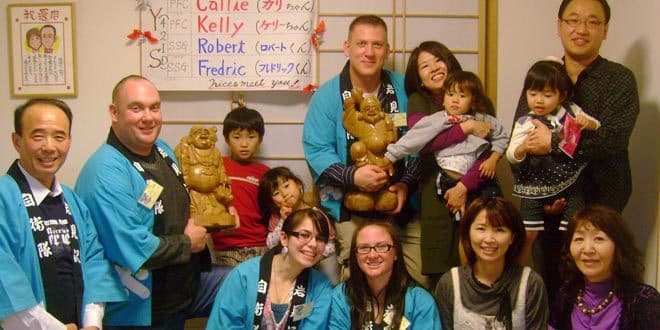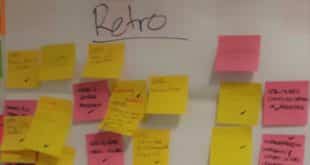This article was originally posted on How Matters. Reposted here with permission.
Stronger, more sustainable community-based organisations can contribute to a more effective response to the needs of vulnerable people. Different types of capacity building activities such as exchange visits and mentoring relationships can provide relevant technical assistance through sharing on-the-ground experiences between organisations.
What is a peer exchange visit?
Peer exchange is a practical and effective tool to foster learning between organisations. The objective of a peer exchange visit is to enable organisations to improve program quality and effectiveness for families and communities by learning from each other.
Exchange visits are intended to benefit all participants through an open exchange of ideas, knowledge, and sound practices. The host organisation should expect to gain as much from the experience as the visitors, if not more. A peer exchange can be appropriate for organisations of any size, geographic reach, mission, or programs. They often are between two organisations, but may involve three or more organisations if appropriate.
Why are peer exchange visits important?
In the developing world, there are thousands if not millions of local organisations that are helping vulnerable families and communities. However there is little coordination among them, and as a result lessons that are learned in one organisation are not always passed on to other groups. An important way to strengthen organisations is to help them learn from each other. While it is good to network at meetings and events, often the best way to learn from other community-based organisations or non-government organisations is to visit them and see with your own eyes what they are doing.
Steps to organise a peer exchange visit
Step One: Make contact between the host and visiting organisation
In many cases this is done by a donor, network or organisation that is working with a range of local organisations in the same area / field. They can act as a focal point, making contact between potential host and visiting organisations. In other cases a local organisation may reach out directly to another organisation they want to learn from.
Step Two: Identify potential areas for support or sharing
Once contact has been made, the two organisations should identify which areas they want to learn about from each other. Possible areas include:
- Leadership/management
- Strategic planning
- Governance/working with boards
- Decision-making/communication
- Budgeting and financial management
- Administrative systems such as human resources, record keeping/information management, etc.
- Issues around program quality or improved services for children and families
- Monitoring and evaluation/organisational learning (planning, data collection, analysis, documentation, etc.)
- Basic skills building for staff or volunteers – such as writing, computer, etc.
- Fundraising and resource mobilisation
- Networking and advocacy
- …and many others!
Step Three: Identify responsibilities in planning and carrying out an exchange visit
Now it’s time to organise the visit. During this step it is very important that both organisations know what they are responsible for. The following list of responsibilities is a good place to start, but can be adapted depending on your needs.
Host organisation
- Establish availability and identify tentative dates for the site visit. If possible, the visit should happen at a time when the visitors can observe your activities taking place.
- Determine who will participate in the exchange visit. Designate which staff will be responsible for receiving the visitors and taking them around.
- Make necessary logistical arrangements, e.g. set up meetings, arrange local transport, meals, etc.
- Inform key staff, volunteers, and community leaders of the upcoming visit.
- Prepare and share an agenda for the visit. Consider including discussions with staff, volunteers, participants and community leaders. Don’t forget to estimate and include travel times and distances between locations. Also consider including a wrap-up or closing activity.
- Prepare any other program materials and share key documents and background information about your organisation with the visitors at least 2 weeks prior to their coming.
- Try to identify good ideas from your organisation that you think might be helpful to the visitors.
- Introduce the visits to community leaders as appropriate.
Visiting organisation(s)
- Determine who will participate in the exchange visit. People should agree to participate in the team only if they have a genuine desire to both offer and receive new ideas and to report back to others.
- Review and give feedback on the proposed agenda.
- Notify the hosting organisation (with enough advance notice) of the names, arrival dates/times and other relevant information about arriving participants.
- Review the materials sent by the hosting organisation.
- Prepare to present/discuss your own organisation and programs, as well as your successes and challenges.
- Ensure participants are adequately prepared for the demands of the agenda/program.
- When you return home, share relevant information, approaches, skills, recommendations and ideas with those who did not participate.
All organisations
- Based on the needs of both organisations, identify focus areas for activities/discussion during the visit.
- Develop clear expectations about the visit, including:
- Issues to be discussed
- Type of activities to be carried out – meetings, focus group discussions, observation, site visits, etc.
- Who will participate?
- The program duration/length
- Financial responsibilities – which organisation will pay for what?
- Who will be responsible for follow-up and reporting?
- Maintain an open, supportive, friendly environment for discussions about programs and organisational strengths and challenges, as well as past successes and lessons learnt.
- Provide complete, accurate and meaningful information and feedback to each other during the visit.
- Do not act in any way that can negatively affect the reputation of the other organisation during the visit.
- Monitor participants’ reactions and comments during the visit. Notify each other of any issues or problems that arise. Communicate and cooperate fully and openly with each other in relation to the solution.
- Provide participants with a formal opportunity to comment on the program immediately following participation.
Step Four: Follow-up
When the visitors return home, it is time to reflect further on what each organisation has learned from the exchange experience. It is important to make an effort to share the information with your colleagues after the visit. Discuss what ideas have come out of the exchange visit and how you might go forward to adapt or enhance your organisation’s programs or systems.
Step Five: Prepare a report to donors on the peer exchange visit
Reporting is an important way to communicate with key stakeholders about the purpose and outcomes of your peer exchange visit. The following key questions should be answered in the report to donors in order to share what both organisations have learned during the visit. We also encourage you to include any additional information, insights or ideas of interest to you in the report. Length of these reports should not exceed five pages.
Peer exchange final report questions:
Use of funds
- Please provide the following general information about your grant:
- Describe the overall purpose and intent of the peer exchange visit. (Consider: What activities were planned? What key issues were discussed? What did both organisations want to gain from the visit?)
-
- What is the full name of your organisation and your current contact information (mailing address, street address, telephone, fax, e-mail, website)?
- What is your grant award number?
- How much money did you receive from the donor for the exchange visit and how did you use the funds?
- What are the names of those who participated in the exchange visit and what are their roles within the organisations?
Learning and follow-up
- What was the most positive or rewarding aspect of the exchange visit?
- What new information, approaches, skills, recommendations or ideas were identified by the visiting organisation(s) as something they would like to consider for their own organisation when they returned home? In other words, what aspects of the hosting organisation’s programs or systems did they want to adapt?
- What new information, approaches, skills, recommendations or ideas were shared with the hosting organisation by the visiting organisation as something they would like to consider for their own organisation?
- What challenges or constraints did you encounter in planning or carrying out the exchange visit?
- What did both organisations identify as the most important follow-up actions following the exchange visit?
- What advice would you give to others who are planning an exchange visit? How can they make the most of the experience?
- Please provide feedback on the donor’s procedures. For example, you can comment on the process of receiving this grant, the communication with staff and/or any other aspects of the partnership.
If at all possible, these questions should be discussed at the end of the exchange visit. That way, the report can be considered a team effort even if it is the responsibility of only one of the organisations. Before it is shared, the report should be circulated among all participants for review.
- Clear expectations for both the host and visiting organisations developed prior to the visit.
- A well-planned and well-implemented program, including enough time to discuss what you have seen at the end of the day.
- A friendly and open atmosphere during the visit.
- People from both organisations actively taking part in the activities and discussions, including organisational leaders who make decisions in the organisations and staff who are working directly with community leaders.
- Not just sharing information, but a focus on trying to learn and identify lessons and ideas to use and adapt after the exchange visit
- Effective follow-up and reporting.
Photo by The U.S. Army




